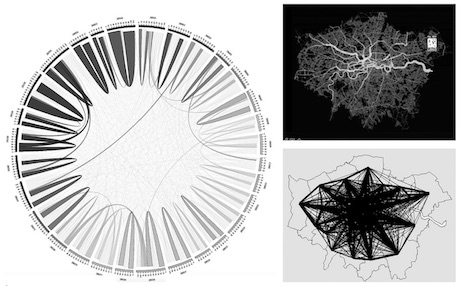Just published: a special Issue of Philosophical Transactions B (The Royal Society) on ‘Interdisciplinary approaches for uncovering the impacts of architecture on collective behaviour’. My own contribution is ‘open access’ and you can read it and print it from the web site here. The issue covers many aspects of collective behaviours at different architectural and spatial scales dealing with different social and physical systems. The commonality of diverse approaches to very different systems is well demonstrated by this issue. All the papers can be seen in terms of contents here.
The editors say:
“Built structures, such as animal nests or buildings that humans occupy, influence where and how individuals interact. These interactions lead to cooperation, collaboration, and collective behaviours, which are fundamental for the formation of functional human and animal societies. Despite the obvious influence of space on interactions, because spatial proximity is necessary for an interaction to occur, spatial constraints are rarely considered in studies of collective behaviour or collective cognition.
This special issue highlights ways in which structures impact society, for example through the impact of the built environment on information flow, disease transmission and health behaviours. In addition, the issue brings new research on how architecture affects collective behaviours of humans and animals. For example, humans have fewer face-to-face interactions than expected in open spaces and ground squirrels interact differently in open and closed spaces. This special issue creates a unique exchange of ideas among a wide range of disciplines including behavioural ecologists, evolutionary biologists, cognitive scientists, social scientists, architects, physicists, and engineers. The goal of this issue is to formalise and catalyse an interdisciplinary exchange that will propel the study of architecture and collective behaviour.”









